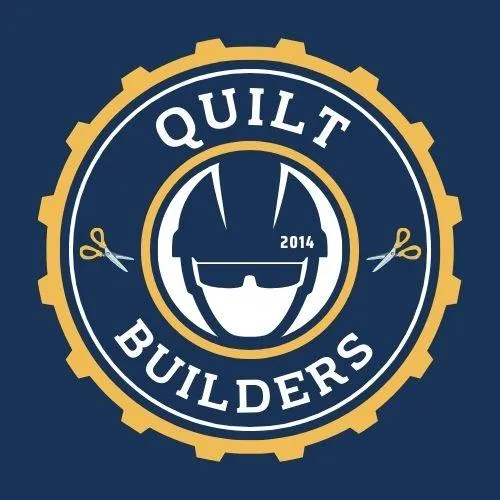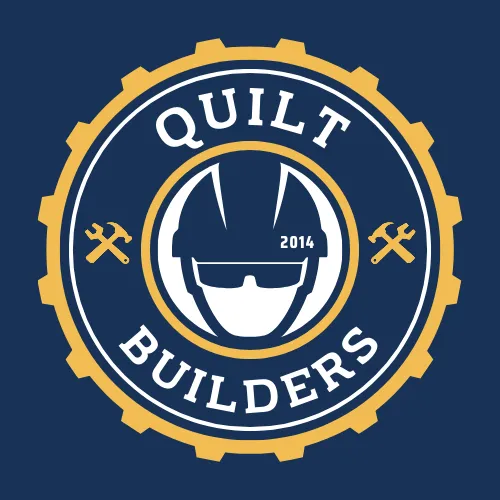
Quilting 101: Everything You Need to Begin Your Quilting Journey
Introduction
Welcome to the world of quilting!
Whether you’ve always admired beautiful handmade quilts or you’re looking for a creative and fulfilling hobby, quilting offers a perfect blend of artistry, craftsmanship, and relaxation.
This post will guide you through the essentials you need to begin your quilting journey; Quilt Builders, know that for any new endeavor, the basics are crucial as you start.
I know from personal experience, it can feel like there’s a lot to learn in the beginning–I almost ran out on the first guild meeting I ever attended! But give yourself a chance, and you’ll find quilters are some of the most giving & helpful people you’ll ever have the pleasure to meet. And pretty soon, you’ll realize like so many of us, that quilting is much more than just a hobby, it's a way of building beauty in the world–a creative outlet that can bring you new friends, grow your joy, and build your confidence in your ability to accomplish the goals you set for yourself.
What Exactly is Quilting?
Definition & Explanation of Quilting and Its Purpose: Quilting is the process of sewing together layers of fabric to create a padded material, typically for blankets or decorative items. It involves creating a quilt top, sandwiching it with batting and backing, and stitching them together. The result is a beautiful, durable textile that can be both functional and artistic.
Brief History of Quilting: Quilting has a rich history dating back centuries. It originated out of necessity, with early quilts made from scrap fabric for warmth. Over time, quilting evolved into an art form, with intricate designs and patterns reflecting cultural heritage and personal stories. Today, quilting is a beloved craft practiced by people worldwide, blending tradition with innovation.
Different Styles & Types of Quilts:
Traditional Quilts: Often feature classic patterns such as Log Cabin, Dresden Plate, or Double Wedding Ring.
Modern Quilts: Characterized by bold colors, geometric designs, and minimalistic styles.
Art Quilts: These are more about visual impact, often incorporating unconventional materials and techniques.
Patchwork Quilts: Made from pieces of fabric sewn together to create a design.
Appliqué Quilts: Feature fabric shapes sewn onto a background fabric.
Whole Cloth Quilts: Made from a single piece of fabric, with quilting stitches creating the design.
Basic Quilting Terminology
The Basic Components of a Quilt:
Quilt Top: The decorative top layer, usually pieced together from various fabrics.
Batting: The middle layer, providing warmth and thickness.
Backing: The fabric layer that forms the bottom of the quilt.
Binding: The fabric strip that encases the edges of the quilt.
Key Terms Every New Quilter Should Know:
Batting: The insulating layer between the quilt top and backing.
Binding: The finishing edge of the quilt.
Piecing: Sewing fabric pieces together to create the quilt top.
Basting: Temporarily holding the quilt layers together before quilting.
Quilting: Stitching through all three layers to keep them together.
Getting Started: The Basics
Overview of the Quilting Process from Start to Finish:
Planning: Choose a pattern, select fabrics, and gather materials.
Cutting: Cut fabric pieces according to the pattern.
Piecing: Sew fabric pieces together to form the quilt top.
Basting: Layer and temporarily hold the quilt top, batting, and backing together.
Quilting: Stitch through all layers to create the quilted design.
Binding: Finish the edges of the quilt.
Basic Quilting Techniques:
Piecing: Learn how to accurately sew fabric pieces together. Accurate piecing ensures that your quilt top looks neat and professional.
Quilting: Discover different quilting stitches and techniques to secure the layers. From simple straight-line quilting to more intricate free-motion designs, quilting adds texture and stability.
Binding: Master the process of binding to give your quilt a polished finish. Binding encases the raw edges of the quilt, providing durability and a clean look.
Importance of Planning and Preparation in Quilting:
Planning is essential in quilting to ensure your project runs smoothly. Taking time to plan and prepare can save you from frustration and mistakes later on. Consider sketching your design, selecting fabrics that complement each other, and reading through all instructions before starting.
Essential Materials and Tools
List of Must-Have Materials:
Fabric: Choose high-quality quilting fabric. Cotton is a popular choice due to its durability and ease of use.
Thread: Use cotton thread for quilting. It blends well with cotton fabrics and holds up well over time.
Batting: Available in various materials like cotton, polyester, or wool. Each type has its own properties, so choose based on the desired warmth and loft of your quilt.
Overview of Essential Tools:
Rotary Cutter: For precise fabric cutting. A sharp blade ensures clean cuts and accurate pieces.
Cutting Mat: Protects surfaces and helps with accurate cutting. Self-healing mats are especially useful as they extend the life of your rotary cutter blade.
Sewing Machine: A reliable machine is essential for piecing and quilting. Look for one with adjustable stitch lengths and a walking foot for even quilting.
Iron: For pressing fabric and seams. A good iron helps set seams and keep fabric pieces flat.
Seam Ripper: Handy for fixing mistakes. Even experienced quilters need to undo stitches sometimes!
Choosing Your First Project
Importance of Starting Small: Begin with a manageable project, like a baby quilt, to build confidence and skills. Smaller projects are less overwhelming and allow you to practice basic techniques without a huge time commitment.
Tips for Selecting a Beginner-Friendly Pattern: Look for patterns labeled "beginner" or "easy" that feature simple designs. Avoid complex patterns with intricate piecing or advanced techniques until you feel more confident.
Benefits of Starting with a Simple Project Like a Baby Quilt: A baby quilt is quick to complete and offers a great introduction to the basic techniques of quilting. Plus, it makes a wonderful gift!
Resources for Beginners
Recommend Books, Websites, and Online Communities:
Books:
"Quilting for Beginners" by Angela Walters,
"The Quilter's Bible" by Linda Clements.
Websites:
Quilt Builders,
Craftsy,
Quilting Daily.
Online Communities: Connecting with other quilters provides support, inspiration, and answers to your questions. Join
Facebook groups,
Reddit forums, or
Local quilting guilds.
At Quilt Builders, we offer comprehensive resources, support, and community for new quilters. Our free introduction pattern is a great starting point. Join us for tutorials, patterns, and a community of like-minded enthusiasts ready to help you succeed.
Bottomline
Quilting is a rewarding hobby that combines creativity and craftsmanship. Our belief here at Quilt Builders is that by understanding the basics, making use of the best materials and tools available to you, and starting with a simple project, you can successfully begin your quilting journey.
We want to encourage each & every new quilter to Just Start Quilting: embrace the learning process and enjoy creating something beautiful. As you look around, you’re going to see some insanely beautiful quilts & talented quilt makers from every conceivable background & walk of life…please don’t let their talents discourage or intimidate you. Just always remember, every quilter started as a beginner.
Call to Action:
Ready to go, but not sure what to do next? No worries; we’ve got you covered. Try one (or more) of the following:
Sign up for our newsletter,
Download the free pattern,
Join our community for more support & inspiration, or
For More Information check out these additional posts about getting started:
Essential Tools for New Quilters: What You Really Need
Setting Up Your Quilting Space: Tips for Success

